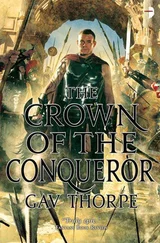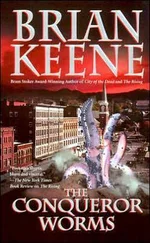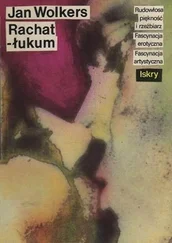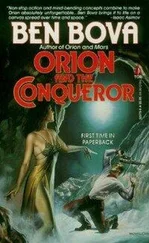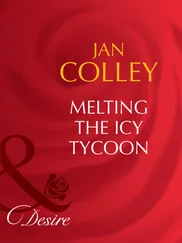The next morning he wended his way further eastward, through unfamiliar terrain where the ground was covered mainly by moss and heather, dwarf birch and greenish-grey willow, with a scattering of rotting reindeer antlers. He soon mastered the technique of planting his army boots on the tangled roots of the willow trees when crossing streams. Although the landscape seemed monotonous it was not flat, but constantly rose and fell, a fact that made it hard to get his bearings. The soggy peat sapped his strength, and the walk was not made any easier by the heat, with the temperature in the mid-eighties. And yet you’re actually inside the Arctic Circle, Jonas told himself. If you were to follow this same line of longitude you’d be walking across the ice on Greenland, so help me. And that is absolutely true: anyone wanting to see how much Norway owes to the warm embrace of the Gulf Stream need only go for a hike across Finnmarksvidda.
At long last he reached the top of Lavvoai’vi and sat there surveying the view all the way across to the snow-covered peaks on the coast, feeling that he had much the same perspective on things as the rough-legged buzzard swooping over his head. But it was not an outlook he was after: it was insight. He scanned the surrounding scene, feeling that he was at the very centre of the country, that to be sitting here on this hilltop on Finnmarksvidda must be the equivalent of being on Ayer’s Rock, the red mountain in the heart of Australia, a place where it was so forcibly impressed on one that every landscape has a story to tell. Sitting there, staring out across the boundless plain, he realized that it was true what some people said: Norway was one big, protected national park. And it is not a bad idea to pause for a moment here to consider Finnmarksvidda, Professor, because what can you know about Norway unless you have visited Finnmarksvidda? Not Jotunheimen, but Finnmarksvidda is Norway’s primeval home, as well as an outer limit of the imagination, a sort of Timbuktu within the country’s borders. Not until he was sitting on the top of Lavvoai’vi, with a view that ran full-circle, did Jonas really appreciate a fact which he had come across so often in school textbooks: that an incredible ninety-six per cent of Norway was virgin territory. Only now did he see how desolate, how wild Norway actually was, how uncivilized, how fundamentally uninhabited. He surveyed the landscape, feeling for a moment that it exuded an emptiness that his imagination could never hope to fill. ‘Holy shit,’ he muttered to himself. ‘You could dump a small European country here, just on this deserted plain round about me, and all the millions of people in it.’
Jonas sat on the top of Lavvoai’vi, next to a trigonometric point, a pole, rather like a seamark in a sea of moss, lichen and stone and almost had to hang on to it, so mind-reeling were the prospects. Because there was something about this vast, untamed wilderness which also helped him to see the reason for the golden age which his country was living through: the gift granted to Norway was that of remaining untouched. Just as Europe had been thrown into chaos during the age of the great migration, while Norway was enjoying a time of plenty and prosperity when it could relax and consolidate its glorious Viking Age — so it was now, too. They had entered upon a new era of great migrations, and once more Norway had succeeded — again thanks to its strict legislation — in remaining untouched, if you didn’t count the handful of poor refugees who slipped through the needle’s eye, and a few thousand immigrant workers. It could, in fact, be on the threshold of a new golden age, while the rest of the world lay bleeding.
But — he could not rid himself of this thought — this was also his chance. The country was wide open to conquest. The whole of Norway lay spread before him like an enormous blank page.
This was also why he had, perhaps unwittingly, made for this spot. He did not want, like Nansen, to cross anything, or to reach some far frontier; he wanted to work his way inwards, into something, in towards a vital centre: the riddle that is Norway. If there was one place where he had a chance of finding an unknown — nay, unlikely — Norwegian reality, a vital source of inspiration, it had to be here. In the emptiness. He took another compass bearing, still due east, towards Urdutoai’vi, and tramped off, first down, then straight ahead, alongside lakes and over marshes dotted with reddish-orange cloudberry maps. Still no mosquitoes. He kept a sharp lookout in all directions, with the monotonous call of the golden plover in his ears. He was brimful of optimism, knew that there was a part of Norway that could not be pinned down on a map. Here, right here, at any minute, he might run into what he sought — a lion or, if nothing else, a diamond the size of a pinhead.
It was still abnormally hot. Plump white clouds, nigh-on identical to one another, glided across the sky at regular intervals, their bottom edges flattened out as if they were being pushed across a glass surface. Jonas felt an incipient tightening of his balls. Late in the afternoon the humming sound grew ominously louder, so much so that the whole plain suddenly sounded like a camouflaged generator. Jonas kept looking round about as he pitched camp on a knoll in a little hollow between Lavvoai’vi and Urdutoai’vi, right next to a stream. The sun was hovering low on the horizon, and he was on his way into the tent to unroll his sleeping bag when the ground began to shake, and at that same moment he heard the rumbling, it sounded as if a tank was driving straight for him.
He spun round. He had known, and yet not known. It was a dragon. At first he was disappointed. The next instant, delighted. Delighted because it confirmed that all his ingrained ideas about the world, everything he had learned in his twelve years of schooling, was wrong, or at any rate not the whole story. He also had time to think that Daniel ought to have been there, to see that Jonas was right: the Norwegian lion was not a lion. The creature in the national coat of arms, the creature that lived at the heart of Norway, was a dragon.
How did this dragon look? It was transparent. By which I mean, the dragon was made up of mosquitoes, millions of mosquitoes. It was formed, quite simply, out of the most common of all things. That was the secret: at the heart of Norway lived a dragon, a monster composed of small fry. And it emitted a shimmering glow, like the Northern Lights, or like something electrified. And here — at last — Jonas found the answer to the question of what sound a dragon makes. It hums. Like a transformer. He should have known it, because the dragon is a creature that has mastered the art of transformation.
For this reason he only saw the dragon clearly, in all its unnerving gruesomeness, at the second when he turned around — the next moment it was transparent, a dense swarm of glistening mosquitoes. Only when he had had his back to it had the dragon assumed its real form. Consequently there is only one way to slay a dragon, and Jonas instinctively knew how, had learned this skill long before, was not even surprised to find hidden strands in his life suddenly revealing themselves in this way, a little like the secret writing they used to do as children, which only became visible when you held the paper over the cooker ring. A dragon could only be killed by a discus throw, a swift, surprising pivotal action. Jonas stood with his back to it, picked up a flat, almost circular stone, a good two pounds in weight, stood with his back to it and gathered himself, hefted the stone disc in his hand, made a couple of swings, heard the hum turn into a roar, whirled round and threw the stone with all his might, like a discus, so that it struck the dragon right between the eyes, with a noise like that of a vase smashing, before it had time to become transparent. The dragon fell down dead, lay revealed as a true dragon in all its banality, as seen in countless pictures. It reminds me of something I’ve seen before, Jonas thought to himself, only it’s bigger.
Читать дальше


